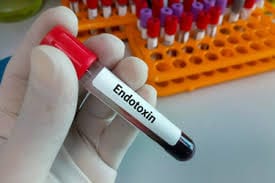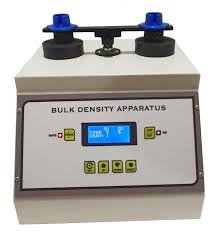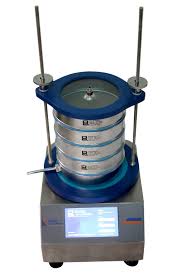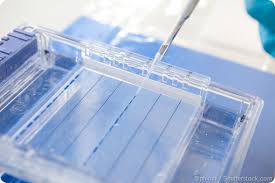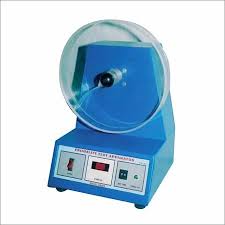|
Getting your Trinity Audio player ready... |
Q4B Annex 6 Uniformity of Dosage Units: General Chapter
1. Introduction: Uniformity of Dosage Units
Dosage Units: This document represents the outcome of the Q4B evaluation process for the Uniformity of Dosage Units General Chapter. The annex describes the findings and recommendations resulting from the efforts to harmonize standards across various pharmacopoeias. It is a product of the Pharmacopoeial Discussion Group (PDG) and serves to ensure that uniformity in dosage units is consistently maintained across different regions.
The primary purpose of this annex is to present a set of aligned guidelines that can be used universally across various pharmacopeial standards to help ensure that dosage forms contain a consistent amount of active pharmaceutical ingredients (APIs) within specified limits. By standardizing the criteria for uniformity, this harmonization aims to improve the safety, efficacy, and quality of pharmaceutical products globally.
2. Q4B Outcome
2.1 Analytical Procedures
The International Council for Harmonisation (ICH) Steering Committee reviewed the findings of the Q4B Expert Working Group (EWG) and provided the following recommendations for regulatory practices regarding the uniformity of dosage units. The committee concluded that the official pharmacopoeial texts, specifically the European Pharmacopoeia (Ph. Eur.) Chapter 2.9.40, Japanese Pharmacopoeia (JP) 6.02, and United States Pharmacopeia (USP) General Chapter <905> can be used interchangeably in regions adhering to ICH guidelines, provided certain conditions are met.
2.1.1 Mass/Weight Variation Test
The Mass/Weight Variation test can serve as an alternative to the Content Uniformity Test, but it is only applicable if certain criteria are met. Specifically, for products where the active ingredient dose is under 25 mg or if the variation exceeds 25%, the Mass/Weight Variation test is not interchangeable in all ICH regions. Therefore, the Content Uniformity Test remains the preferred method unless the threshold limit is met.
2.1.2 Specific Dosage Forms
Certain dosage forms that are included in the local pharmacopoeial texts, indicated by black diamond symbols, are not considered interchangeable for the Uniformity of Dosage Units test in all ICH regions. These symbols denote specific cases where regional differences may apply and where consistency in the testing methods must be maintained according to the local pharmacopoeial standard.
2.1.3 Correction Factor for Assays
In cases where different testing procedures are applied for the assay of the preparation and the Content Uniformity Test, it may be necessary to apply a correction factor. This correction factor must be clearly specified and justified within the application dossier. The correction ensures that any discrepancies between the testing methods are accounted for, maintaining consistency in the final analysis.
2.2 Acceptance Criteria
The acceptance criteria for uniformity of dosage units are harmonized across the three main pharmacopoeias: the European Pharmacopoeia, the Japanese Pharmacopoeia, and the United States Pharmacopeia. This means that the thresholds and acceptable limits for variability are consistent across these authoritative sources, ensuring uniformity and compliance in different regions. By harmonizing these criteria, the aim is to simplify the regulatory process for manufacturers and regulators alike, facilitating international trade and manufacturing consistency.
3. Timing of Annex Implementation
The implementation of this annex occurs once it is formally incorporated into the regulatory framework at ICH Step 5. At this stage, the annex is considered official and applicable to regions that adopt the ICH guidelines. The timing of implementation may vary between regions, as each country or regional authority may have its own processes for adopting international standards into local regulations.
Manufacturers and regulatory authorities should monitor the adoption process in their respective regions to ensure compliance with the updated standards. As countries and regions gradually adopt these harmonized guidelines, pharmaceutical companies can expect a more streamlined approach to testing the uniformity of dosage units across international markets.
4. Considerations for Implementation
4.1 General Considerations
When pharmaceutical companies choose to update their existing methods in line with the newly implemented Q4B-evaluated pharmacopoeial texts, as referenced in Section 2.1, they must follow the standard regulatory procedures for notifying changes. These procedures, which vary by region, may include change notifications, variations, and prior approvals, depending on the nature of the changes being made to the manufacturing or testing processes.
In some regions, manufacturers might be required to provide additional documentation to demonstrate compliance with the new standards. This ensures that all changes to compendial procedures are transparently managed and reviewed by the appropriate regulatory bodies. The regional regulatory framework will guide how these updates are handled and when they need to be submitted.
4.2 FDA Consideration
For companies in the United States, the Food and Drug Administration (FDA) acknowledges the interchangeability of the pharmacopoeial texts referenced in Section 2.1 of this annex. However, the FDA may request that manufacturers provide evidence that the chosen method is suitable for the specific material or product being tested, regardless of the origin of the method.
It is important to note that the FDA does not accept the exception to the 2% Relative Standard Deviation (RSD) rule as stated in both the JP and Ph. Eur. for cases where the dosage form is below the 25 mg/25% threshold. Therefore, for products below this threshold, the Content Uniformity Test must be performed as per the official guidelines outlined by the USP.
4.3 EU Consideration
In the European Union, the monographs in the European Pharmacopoeia (Ph. Eur.) have mandatory applicability. Regulatory authorities in the EU may accept applications for marketing authorizations, renewals, or variations that cite the use of corresponding texts from other pharmacopoeias as referenced in Section 2.1, as long as these texts are considered interchangeable according to the conditions set forth in this annex.
Thus, if a manufacturer follows the guidelines of the JP or USP in a region where Ph. Eur. guidelines are applicable, the company can submit documentation based on the alternative pharmacopoeial text, provided that it meets the conditions outlined in the annex. This helps facilitate international consistency while ensuring compliance with local regulations.
4.4 MHLW Consideration
For Japan, the Ministry of Health, Labour and Welfare (MHLW) also recognizes the interchangeability of the pharmacopoeial texts referenced in Section 2.1, with the conditions outlined in this annex. Manufacturers will receive notification from the MHLW regarding any additional implementation requirements specific to Japan when the annex is officially adopted.
It is essential that companies keep up to date with any regulatory changes in Japan and follow the MHLW’s implementation guidelines to ensure compliance with local practices.
4.5 Health Canada Consideration
In Canada, regulatory authorities can consider the pharmacopoeial texts listed in Section 2.1 of this annex as interchangeable. As in other regions, this interchangeability applies when the texts are used in accordance with the specified conditions. Manufacturers in Canada can therefore use the Ph. Eur., JP, or USP texts, depending on the specific circumstances of their application, without additional requirements from Health Canada.
5. References Used for the Q4B Evaluation
The Q4B evaluation process referred to several key documents and pharmacopoeial references:
5.1 The PDG Stage 5B Sign-Off Document
The Pharmacopoeial Discussion Group (PDG) Stage 5B sign-off document was a crucial document in the evaluation process. It provided the foundation for harmonizing the standards for uniformity of dosage units across different pharmacopoeias. This document was officially released in Volume 13, Number 2 (May 2004) of the Japanese Pharmacopoeial Forum.
5.2 Pharmacopoeial References
The following pharmacopoeial texts were evaluated and harmonized during the Q4B process:
- European Pharmacopoeia (Ph. Eur.): Supplement 6.1 (official April 2008) for Uniformity of Dosage Units, with further changes in Supplement 7.4, official April 1, 2012.
- Japanese Pharmacopoeia (JP): 6.02 Uniformity of Dosage Units, as updated by errata and notifications, including those from MHLW.
- United States Pharmacopeia (USP): General Chapter <905> Uniformity of Dosage Units, as officially published in USP 33-Reissue [October 2010] with updates in December 2011.
By reviewing these references and harmonizing their guidelines, the Q4B evaluation process facilitated the creation of a unified approach to testing the uniformity of dosage units, which can be used across different regions worldwide.




